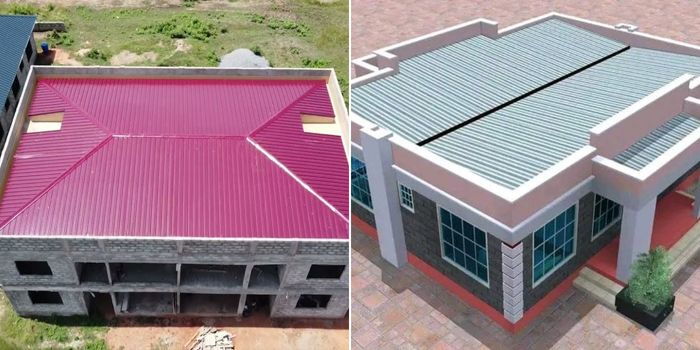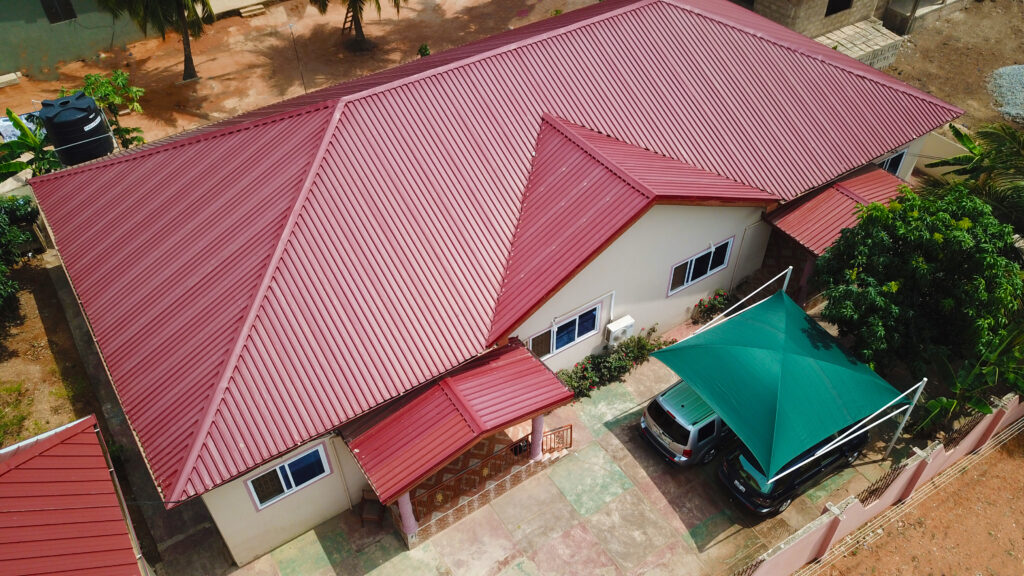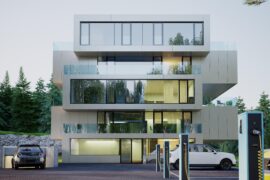Are hidden roof construction and secret roof techniques one and the same? While the terms may initially seem interchangeable, a closer examination reveals distinct differences between the two. In this discussion, we will explore the key features of hidden roof construction and secret roof techniques, highlighting their applications and advantages, as well as the potential disadvantages. By the end, you will have a clearer understanding of these architectural elements and be able to discern the nuances that set them apart. So, let’s dive into the world of roofs and uncover the secrets they hold.
Understanding Hidden Roof Construction
To understand hidden roof construction, you need to familiarize yourself with the intricate design and innovative techniques that are employed to create a seamless and visually unobtrusive roofing system. Hidden roofs, also known as concealed roofs, differ from conventional roofs in their ability to blend into the overall architectural design of a building, making them an appealing option for modern structures. Unlike conventional roofs that are visible from the exterior, hidden roofs are designed to be concealed, creating a sleek and minimalist appearance.
When considering hidden roof design, there are several important factors to take into account. One key consideration is the structural integrity of the roof. Hidden roofs must be able to support the weight of the building and withstand various weather conditions. Additionally, special attention needs to be given to the insulation and ventilation systems to ensure optimal energy efficiency and comfort.
Another aspect to consider is the choice of materials. Hidden roofs often utilize lightweight and durable materials that are capable of withstanding the elements while maintaining their aesthetic appeal. The use of innovative roofing materials, such as translucent panels or green roofs, can further enhance the visual impact of a hidden roof.
Key Features of Hidden Roof Construction
Now let’s explore the key features of hidden roof construction. Hidden roofs offer numerous benefits, such as enhanced aesthetics and improved energy efficiency. In terms of the construction process, it involves the careful placement of structural elements and the use of specialized materials to create a seamless and visually appealing roof design.
Benefits of Hidden Roofs
Hidden roofs offer a range of benefits that enhance the functionality and aesthetics of a building, making them a popular choice in modern construction. One of the main benefits of hidden roofs is their ability to provide a seamless and visually appealing appearance to a structure. By concealing the roof elements, such as beams and trusses, hidden roofs create a clean and streamlined look. Additionally, hidden roofs allow for more flexible and efficient use of space within a building. The absence of visible roof components allows for greater freedom in designing the interior layout. Hidden roofs also have a wide range of applications, including commercial buildings, residential homes, and even cultural and recreational facilities. Their versatility and aesthetic appeal make hidden roofs an attractive option for architects and builders alike.
Construction Process Explained
The construction process of hidden roofs involves several key features that contribute to their seamless and visually appealing appearance. Understanding the construction techniques behind hidden roofs is crucial to appreciating their advantages. One of the key features is the use of concealed structural elements, such as hidden beams and supports, which are carefully designed and integrated into the overall structure. This allows for a clean and unobstructed ceiling, creating a sense of openness and spaciousness. Additionally, hidden roofs often employ advanced waterproofing systems and insulation materials to ensure durability and energy efficiency. The construction process also involves meticulous attention to detail and precision, as each component needs to be accurately measured and installed to achieve the desired aesthetic and functional outcome. By understanding the construction techniques and advantages of hidden roofs, one can appreciate the craftsmanship and ingenuity behind their creation.
Exploring Secret Roof Techniques
What are some lesser-known techniques used in constructing roofs that are designed to remain hidden from sight? Exploring innovative designs and their historical origins can shed light on these secret roof techniques. One such technique is the hidden roof truss system, which originated in ancient Japanese architecture. This design utilizes a network of wooden trusses hidden within the walls and ceiling to support the roof without the need for visible beams or columns. Another technique is the concealed gutter system, commonly found in historical European buildings. This system involves installing a hidden gutter channel within the roof structure, allowing rainwater to be collected and drained discreetly without the need for visible gutters or downspouts. Additionally, the hidden roof access hatch is a technique used in modern construction. This innovative design incorporates a concealed access point within the roof, allowing for easy maintenance or inspection without compromising the overall aesthetics of the building. These lesser-known techniques in roof construction not only showcase the ingenuity of architects and builders but also demonstrate the importance of functionality and aesthetics in creating hidden roofs.
Differentiating Hidden Roof Construction and Secret Roof Techniques
Differentiating between hidden roof construction and secret roof techniques requires a clear understanding of the distinct features and purposes of each method. While both techniques aim to conceal the roof structure, they differ in their approach and execution.
Hidden roof construction involves creating a flat or slightly sloping roof with no visible beams or trusses. The supporting structure is concealed within the walls or ceilings, giving the appearance of a seamless roof. This technique is commonly used in modern architecture to achieve a sleek and minimalist aesthetic. The main advantage of hidden roof construction is the ability to create open and spacious interiors without compromising on structural integrity. However, it requires careful planning and engineering to ensure proper load distribution and support.
On the other hand, secret roof techniques refer to the use of traditional or innovative methods to disguise the roof structure. This can involve incorporating false ceilings, decorative elements, or architectural features that hide the beams and trusses. Secret roof techniques are often used in historical or ornate buildings where preserving the original design is important. The advantage of this approach is the ability to maintain the visual integrity of the structure while still providing necessary support. However, it may limit the flexibility of interior design and require regular maintenance to prevent deterioration.
Applications of Hidden Roof Construction
Now let’s explore the practical applications of hidden roof construction. Hidden roofs offer numerous benefits, such as improved aesthetics, increased space utilization, and enhanced energy efficiency. Examples of hidden roof applications include residential buildings, commercial structures, and even public spaces like museums and exhibition halls. These applications demonstrate the versatility and effectiveness of hidden roof construction in various architectural contexts.
Benefits of Hidden Roofs
Hidden roofs offer a multitude of advantages in various applications of construction due to their innovative design and efficient use of space. One of the key benefits of hidden roofs is their ability to create a seamless and aesthetically pleasing exterior. The hidden roof design allows for the concealment of structural elements, such as beams and trusses, resulting in a clean and sleek appearance. Additionally, hidden roofs can significantly reduce construction costs. By eliminating the need for traditional roofing materials and reducing the complexity of the roof structure, hidden roofs can save both time and money during the construction process. Furthermore, hidden roofs provide enhanced insulation and energy efficiency. The concealed design minimizes heat transfer and air leakage, resulting in lower energy consumption and reduced utility bills. Overall, hidden roofs offer a range of practical and cost-effective solutions for modern construction projects.
Examples of Hidden Roof Applications
One notable example of the application of hidden roof construction is in the design of modern commercial buildings. Hidden roof materials and design techniques are utilized to create clean, seamless lines and a sleek, modern aesthetic. The use of hidden roof construction allows for the integration of large, uninterrupted spans of glass, creating a sense of openness and maximizing natural light. Additionally, the use of hidden roof materials such as metal or composite panels provides durability and weather resistance, ensuring the longevity of the structure. The hidden roof design also allows for the concealment of mechanical systems and utilities, minimizing visual clutter and creating a clean, uncluttered appearance both inside and outside the building. Overall, hidden roof construction offers both functional and aesthetic benefits in the design of modern commercial buildings.
Using secret roof techniques can offer various advantages and disadvantages in terms of construction and functionality. When it comes to the pros of secret roof techniques, one advantage is the aesthetic appeal it provides. Hidden roof construction methods allow for a sleek and seamless design, without visible beams or structures, creating a visually pleasing appearance. Additionally, these techniques offer enhanced insulation and energy efficiency. By concealing the roof, heat transfer is minimized, resulting in reduced energy consumption for heating and cooling. Another advantage is the increased usable space. With hidden roof construction, the space beneath the roof is free from obstructions, allowing for more adaptable and flexible use. However, there are also some cons to consider. One disadvantage is the complexity of construction. Implementing secret roof techniques requires careful planning and expertise, increasing construction time and cost. Additionally, maintenance and repairs can be challenging due to limited accessibility. Finally, there may be limitations with regards to the type of roof design that can be achieved with these techniques. It is important to carefully weigh the pros and cons before deciding to utilize hidden roof construction methods.
Frequently Asked Questions
What Are the Advantages and Disadvantages of Hidden Roof Construction?
Hidden roof construction, also known as concealed roof construction, offers several advantages and disadvantages. On the plus side, it provides a sleek and aesthetic look to the building, as the roof structure is not visible externally. This design also offers enhanced insulation and energy efficiency. However, hidden roof construction can be more complex and expensive to build and maintain. Additionally, it may limit the accessibility for repairs and inspections.
Are There Any Specific Applications for Hidden Roof Construction?
Hidden roof construction offers unique design possibilities and cost considerations for specific applications. The unique design possibilities of hidden roof construction allow for innovative and aesthetically pleasing architectural designs. Additionally, the cost considerations of hidden roof construction can be advantageous in certain projects, as it may reduce the overall construction costs. Therefore, hidden roof construction can be a viable option for those looking to create distinctive designs while considering cost efficiency.
How Does Hidden Roof Construction Differ From Secret Roof Techniques?
Hidden roof construction and secret roof techniques have some similarities but also significant differences. Both involve concealing the roof structure for aesthetic or functional purposes. However, hidden roof construction focuses on creating a seamless and flush appearance, often by using advanced materials and techniques. In contrast, secret roof techniques aim to completely hide the roof, making it indistinguishable from the surrounding architecture. This may involve complex mechanisms or clever design elements. Understanding these differences is crucial for choosing the right approach for your specific project.
What Are the Key Features of Hidden Roof Construction?
Key features of hidden roof construction include a concealed design that hides the roof structure from view, providing a clean and seamless appearance. This construction method often utilizes lightweight materials and advanced engineering techniques to create a strong and durable roof. Pros of hidden roof construction include enhanced aesthetics and the ability to incorporate unique architectural designs. However, it can be more expensive and requires careful planning to ensure proper installation and maintenance. Cons include potential difficulty in accessing and repairing hidden components.
Can You Provide Examples of Secret Roof Techniques That Are Not Considered Hidden Roof Construction?
Ancient techniques and modern innovations offer a range of secret roof techniques that are not considered hidden roof construction. These methods include the use of camouflage materials, such as vegetation or mirrors, to blend the roof with its surroundings. Another technique involves incorporating retractable panels or trapdoors that can completely conceal the roof when closed. These examples demonstrate that secret roof techniques encompass a variety of strategies that go beyond the concept of hidden roof construction.
Conclusion
In conclusion, hidden roof construction and secret roof techniques may sound similar, but they are not the same. Hidden roof construction refers to a specific method of building roofs that are concealed or integrated into the overall structure, while secret roof techniques involve various strategies to create hidden spaces or features within a roof. Understanding the differences between these approaches is crucial in determining their appropriate applications and assessing their advantages and disadvantages.
Discover more from Ghana Scoop
Subscribe to get the latest posts sent to your email.





